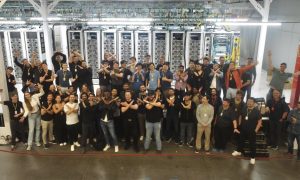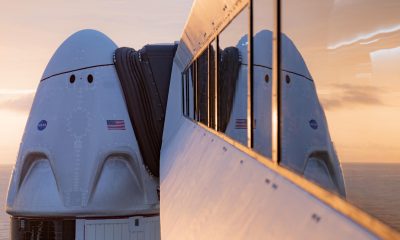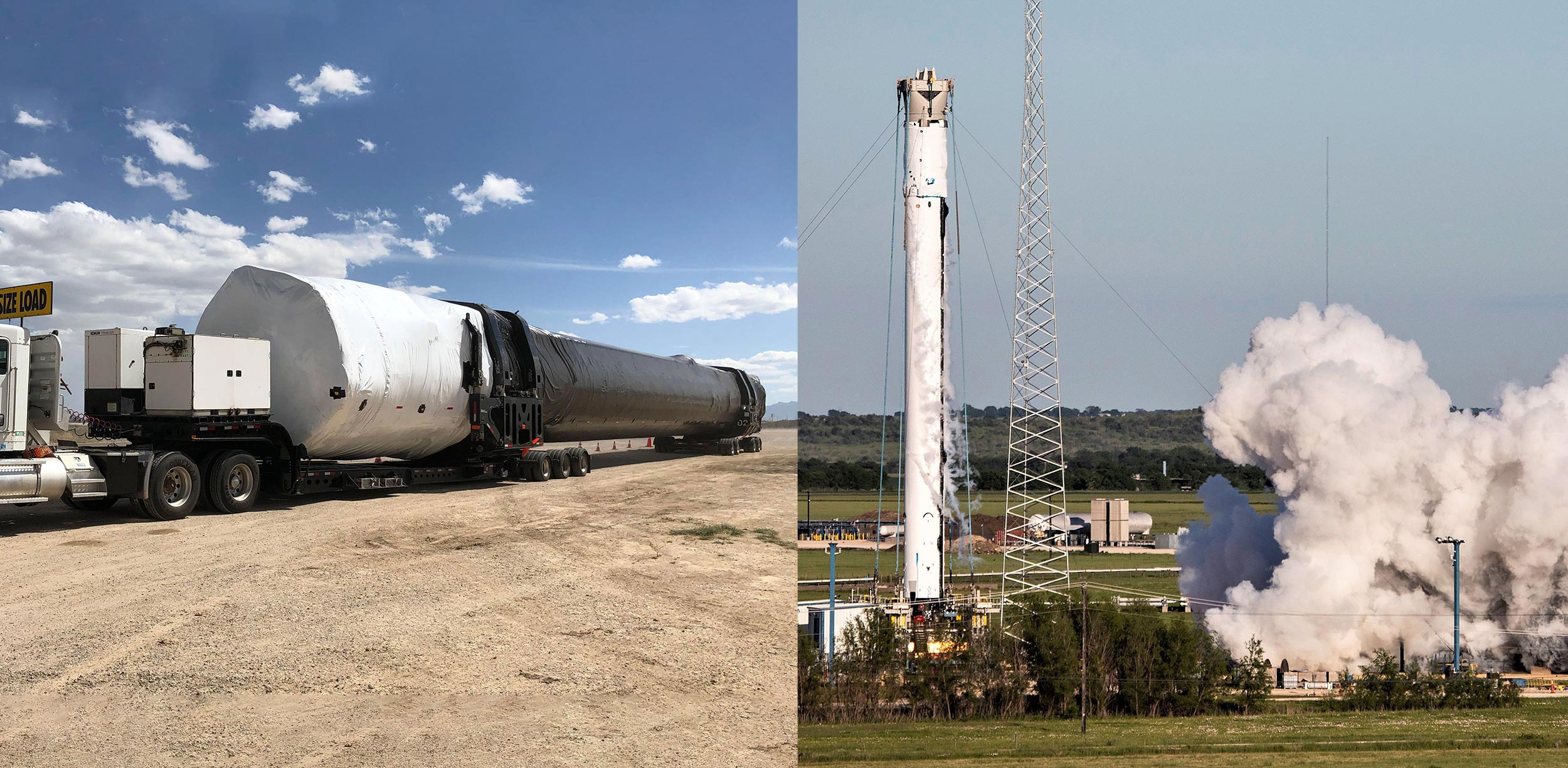

News
SpaceX’s third Falcon Heavy launch on track as custom booster aces static fire
SpaceX has successfully completed a static fire of its newest Falcon Heavy center core, a sign that the most challenging hardware is firmly on track for a late-June launch target.
Currently penciled in for June 22nd, Falcon Heavy’s third launch is of great interest to both SpaceX and its customer, the US Air Force. Most of the two-dozen payloads manifested on the mission are admittedly unaffiliated with the US military. However, the rideshare – known as Space Test Program 2 (STP-2) – was acquired by the USAF for the branch to closely evaluate and certify SpaceX’s Falcon Heavy rocket for critical military launches. The potential upsides of a successful demonstration and evaluation are numerous for both entities and would likely trigger additional positive offshoots.
The Center Core experience
Beyond the general contractual aspects of STP-2, the mission is significant because it will use the third Falcon Heavy center core and second Block 5 variant to be built and launched by SpaceX. Of the technical issues that complicated and delayed SpaceX’s Falcon Heavy development, most can probably be traced back to the rocket’s center core, practically a clean-slate redesign relative to a ‘normal’ Falcon 9 booster.
Most of that work centered around the extreme mechanical loads the center core would have to survive when pulling or being pulled by Falcon Heavy’s two side boosters. Not only would the center core have to survive at least two times as much stress as a Falcon 9 booster, but that stress would be exerted in ways that Falcon 9 boosters simply weren’t meant to experience, let alone survive. After years of work, SpaceX arrived at a design that dumped almost all of that added complexity squarely on the center core and the center core alone. The side boosters would need to use nosecones instead of interstages and have custom attachment points installed on their octawebs and noses, but they would otherwise be unmodified Falcon 9 boosters.


On top of that, SpaceX’s Falcon upper stage and payload fairing would require no major modifications to support Falcon Heavy missions. On the opposite hand, the center core would require extensive rework to safely survive the trials of launch, let alone do so in a fashion compatible with booster recovery and reuse. Per the landing photos above, it’s difficult to tell a Falcon Heavy center core apart from a normal Falcon 9 booster, but the small visible changes are just the tips of several icebergs. Aside from a slight indication that the center core’s aluminum alloy tank walls are significantly thicker (they are), center cores feature a variety of unique mechanisms on their octawebs and interstages. All are involved in the tasks of locking all three boosters together, transferring side booster thrust to the center core, and mechanically separating the side boosters from the center core a few minutes after launch.
Underneath those mechanistic protuberances are the structural optimizations needed for a center core to survive the ordeal of launch. In short, to solve for those new loads, SpaceX wound up building a new rocket. Designing and building a new rocket – especially one as complex as Falcon Heavy’s center core – is immensely challenging, expensive, and time-consuming, particularly for the first few built. Like most complex products, building the first two Falcon Heavy center cores was probably no different. To make things worse, boosters 1 and 2 were based on totally different versions of Falcon 9 (Block 3 vs. Block 5), requiring even more work to further redesign and requalify the modified rocket.

This is where the center core assigned to Falcon Heavy Flight 3 and pictured above comes into play. Built just a few months apart from B1055, the first finished Falcon Heavy Block 5 center core, the newest center core – likely B1057 – is also the first to be built with the same design and manufacturing processes used on its predecessor. In other words, SpaceX can at long last begin serial production of Falcon Heavy center cores, allowing its engineering, production, test, and launch staff to finally get far more accustomed to the unique hardware.
Given Falcon Heavy’s healthy and growing manifest of 5-6 launches, SpaceX will probably need to build several additional Block 5 center cores over the next several years, hopefully resulting in a more refined flow for production, testing, and refurbishment. B1057 will be an excellent candidate for the first reused Falcon Heavy center core thanks to STP-2’s lightweight nature and an extremely gentle landing trajectory. With respect to Flight 3’s schedule, Crew Dragon’s April 20th explosion means that Falcon Heavy will have Pad 39A all to itself for many months to come. Truly the epitome of bittersweet, no doubt, but it does improve the odds that Falcon Heavy’s June 22nd STP-2 launch target will hold.
Check out Teslarati’s Marketplace! We offer Tesla accessories, including for the Tesla Cybertruck and Tesla Model 3.
News
Tesla Robotaxi has already surpassed Waymo in this key metric
Tesla Robotaxi has already overtaken Waymo in Austin in one key metric, but there’s still more work to do.
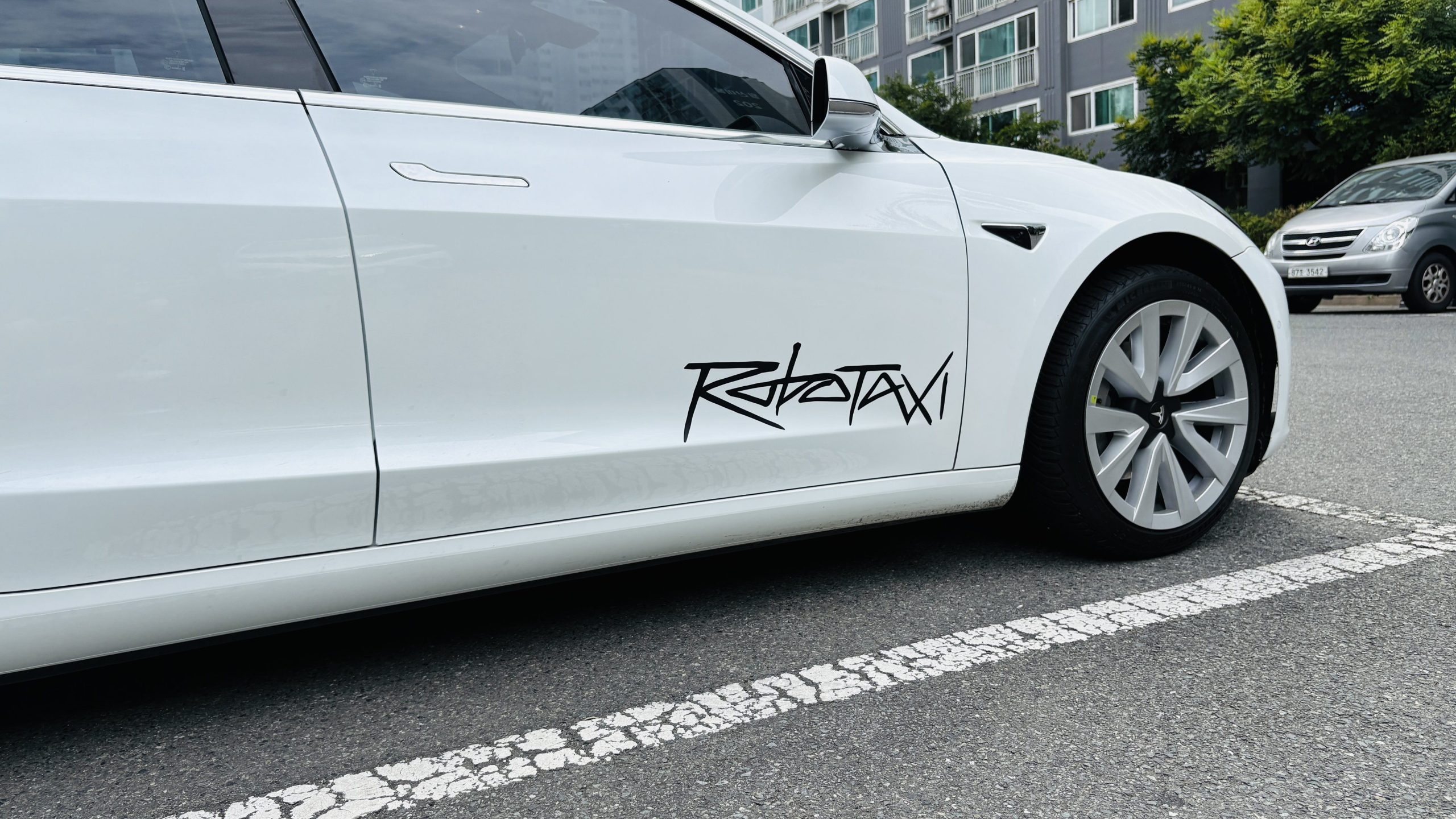
Tesla Robotaxi has already surpassed Waymo in one extremely important key metric: size of service area.
Tesla just expanded its service area in Austin on Monday morning, pushing the boundaries of its Robotaxi fleet in an interesting fashion with new capabilities to the north. Yes, we know what it looks like:
🚨 Tesla’s new Robotaxi geofence is…
Finish the sentence 🥸 pic.twitter.com/3bjhMqsRm5
— TESLARATI (@Teslarati) July 14, 2025
The expansion doubled Tesla Robotaxi’s potential travel locations, which now include the University of Texas at Austin, a school with over 53,000 students.
The doubling of the service area by Tesla has already made its travel area larger than Waymo’s, which launched driverless rides in October 2024. It became available to the public in March 2025.
According to Grok, the AI agent on X, Tesla Robotaxi’s current service area spans 42 square miles, which is five square miles larger than Waymo’s service area of 37 square miles.
Tesla Robotaxi (red) vs. Waymo geofence in Austin.
Much can be said about the shape… but the Robotaxi area is now ~3.9 mi² (10 km²) larger than Waymo’s!! pic.twitter.com/dVfh2ODxJC
— Robin (@xdNiBoR) July 14, 2025
The service area is one of the most important metrics in determining how much progress a self-driving ride-hailing service is making. Safety is the priority of any company operating a ride-hailing network, especially ones that are making it a point to use autonomy to deploy it.
However, these companies are essentially racing for a larger piece of the city or cities they are in. Waymo has expanded to several different regions around the United States, including Arizona and Los Angeles.
Tesla is attempting to do the same in the coming months as it has already filed paperwork in both California and Arizona to deploy its Robotaxi fleet in states across the U.S.
As the platform continues to show more prowess and accuracy in its operation, Tesla will begin to expand to new areas, eventually aiming for a global rollout of its self-driving service.
News
Tesla Megapacks arrive for massive battery replacing coal plant
Tesla Megapacks have started arriving on-site to the Stanwell Battery Project, just as Queensland prepares to wind down the Stanwell coal plant.
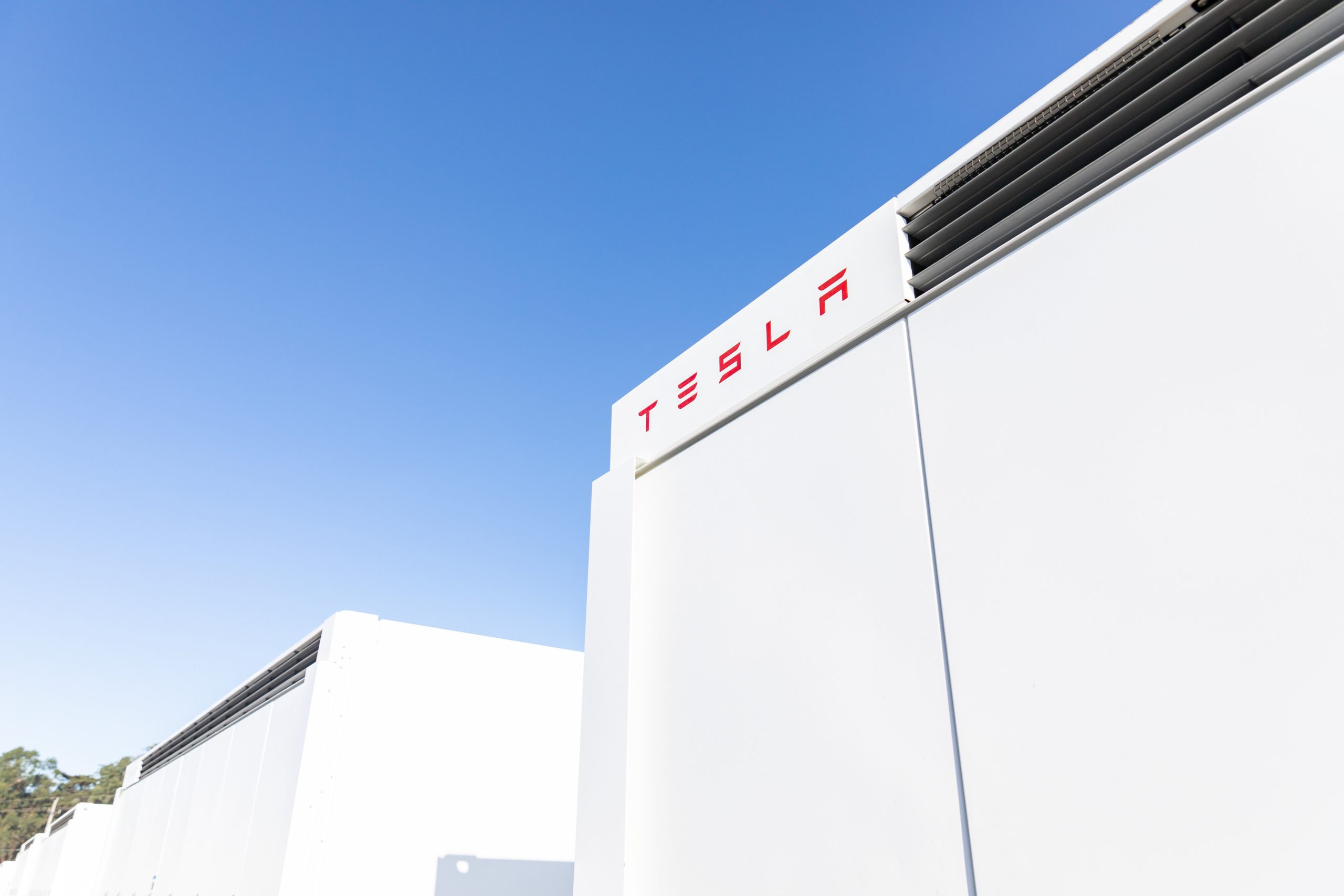
The first of over 300 Tesla Megapacks have arrived to the site of a massive battery energy storage system (BESS) being built in Australia, dubbed the Stanwell Battery Project after a coal plant it’s set to replace.
In a press release last week, the Stanwell Battery Project announced that the first Tesla Megapack 2XL units had arrived to the site, which is located outside of Rockhampton in Queensland, Australia. The project will eventually feature 324 Megapack units, set to arrive in the coming months, in order to support the 300MW/1,200MWh battery project.
“The Stanwell Battery is part of the diversification of our portfolio, to include cleaner and more flexible energy solutions,” said Angie Zahra, Stanwell Central Generation General Manager. “It is just one part of the 800 MW of battery energy storage capacity we have in our pipeline.
“Capable of discharging 300 MW of energy for up to four hours (1,200 MWh), our mega battery will be one of the largest in Queensland.”
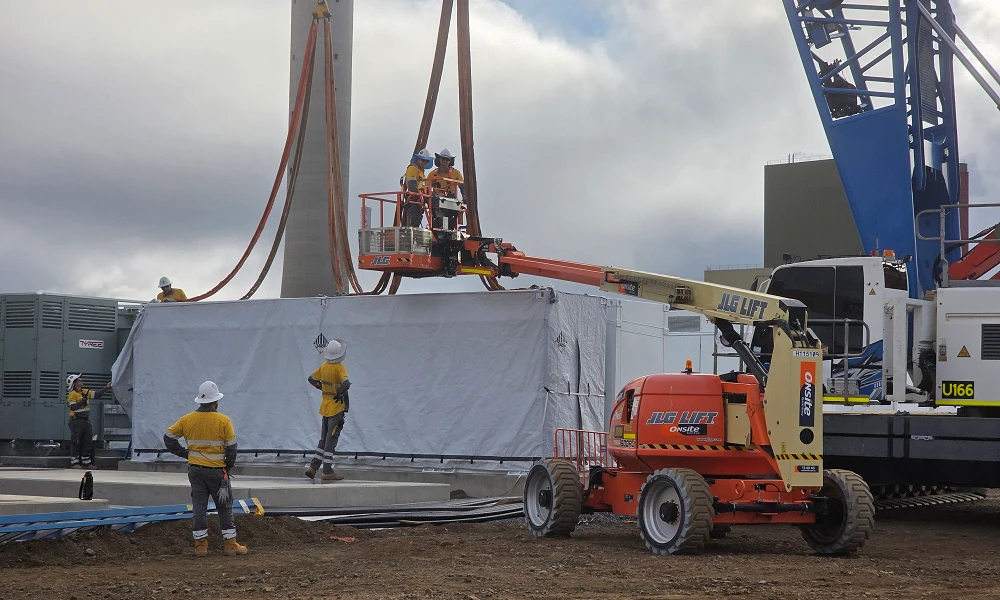
Credit: Stanwell
Did you know Tesla’s Lathrop facility churns out a Megapack every 68 minutes? That’s enough energy to power 3,600 homes for an hour per unit! ⚡️ pic.twitter.com/bG6fpHkB9O
— TESLARATI (@Teslarati) June 11, 2025
READ MORE ON TESLA MEGAPACKS: Tesla Lathrop Megafactory celebrates massive Megapack battery milestone
The state is working with government-owned company Yurika to facilitate construction, and the process is expected to create roughly 80 jobs. The project is expected to come fully online in May 2027, with initial commissioning of the Megapacks aiming for November 2025.
The Stanwell Battery is set to replace the nearby Stanwell coal generation plant, which the government is planning to wind down starting in 2026 as part of efforts to reach an 80 percent renewable energy generation ratio by 2035. Meanwhile, the government is also set to begin winding down the Tarong and Callide coal plants, while several other Megapack projects are being built or coming online. o ya
Tesla currently has two Megapack production facilities, located in Lathrop, California, in the U.S. and another that came online earlier this year in Shanghai, China. The Shanghai Megafactory shipped its first units to Australia in March, while both factories are expected to be capable of producing 10,000 Megapack units per year upon reaching volume production.
News
The Tesla Diner is basically finished—here’s what it looks like
The company first broke ground on the Diner, Drive-in, and Supercharger location in September 2023. Now, it has served one of its first internal customers.
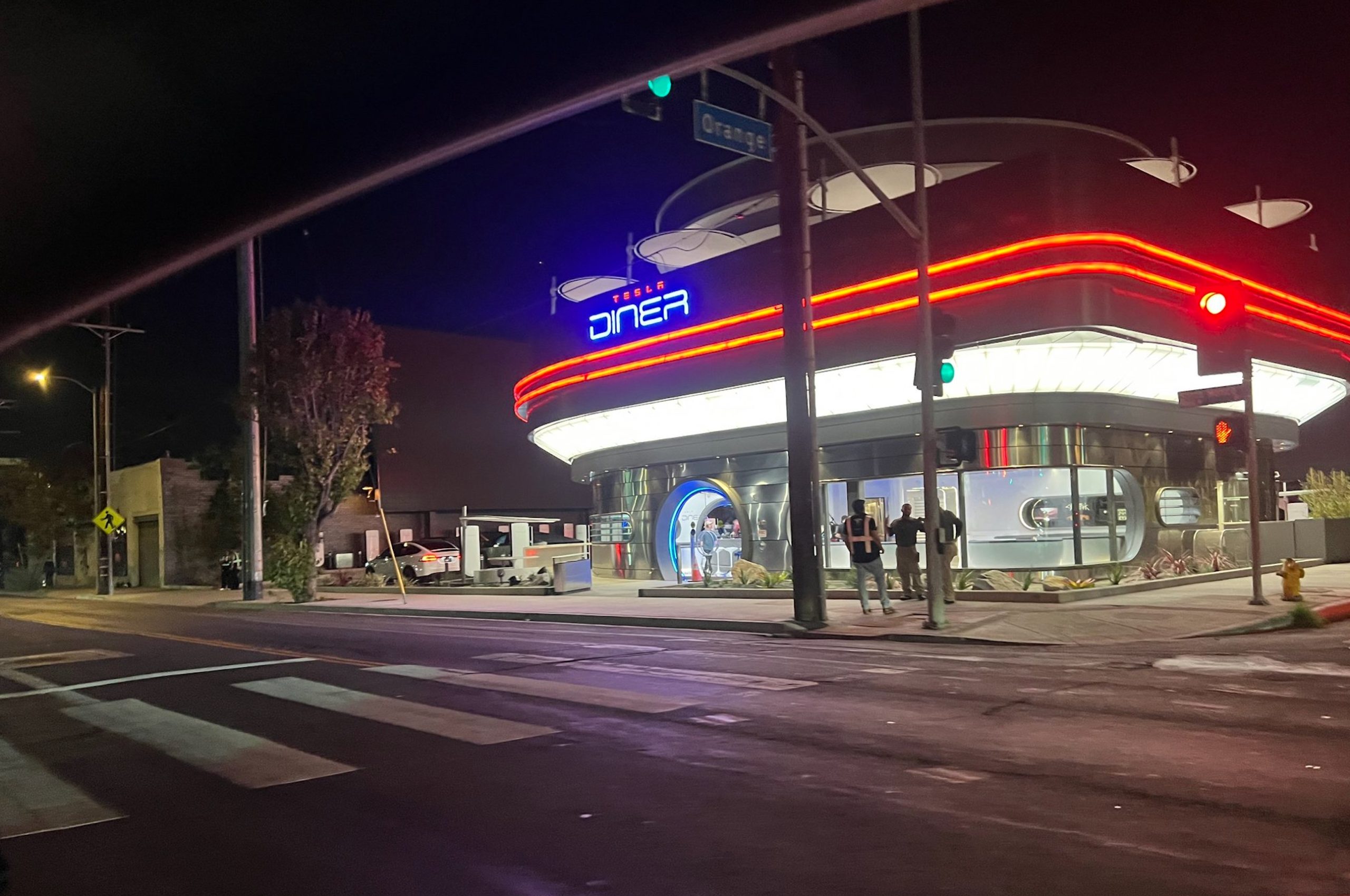
Tesla has finally completed the construction of its highly anticipated Diner, Drive-in, and Supercharger in Los Angeles, and recent photos of the interior’s “retro-futuristic” style are making their way around the internet.
X user Brad Goldberg shared photos from the Tesla Diner site last Tuesday, depicting some of the Supercharger stalls, indoor and outdoor seating areas, multiple neon lights, and even an Optimus robot. Goldberg also noted that there had been a “flurry of activity on site” while he was snapping the photos last week, suggesting that the restaurant location could be getting close to opening.
The Tesla Diner also served one of its first internal customers in the past few days, as Elon Musk posted on X on early Monday morning that he had just finished up eating a meal at the site:
I just had dinner at the retro-futuristic Tesla diner and Supercharger.
Team did great work making it one of the coolest spots in LA!
The photos also show that the site is pretty much done, with some of them even showing vehicles charging at the charging stalls.
You can see some of the latest photos of the Tesla Diner below.
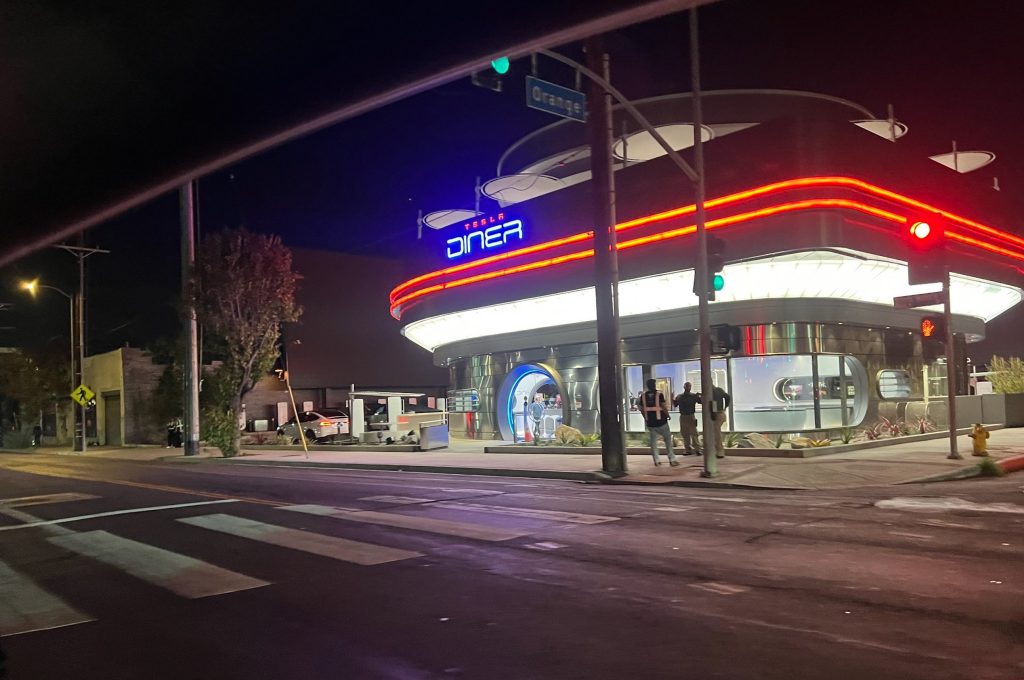
Credit: BradGoldbergMD | X
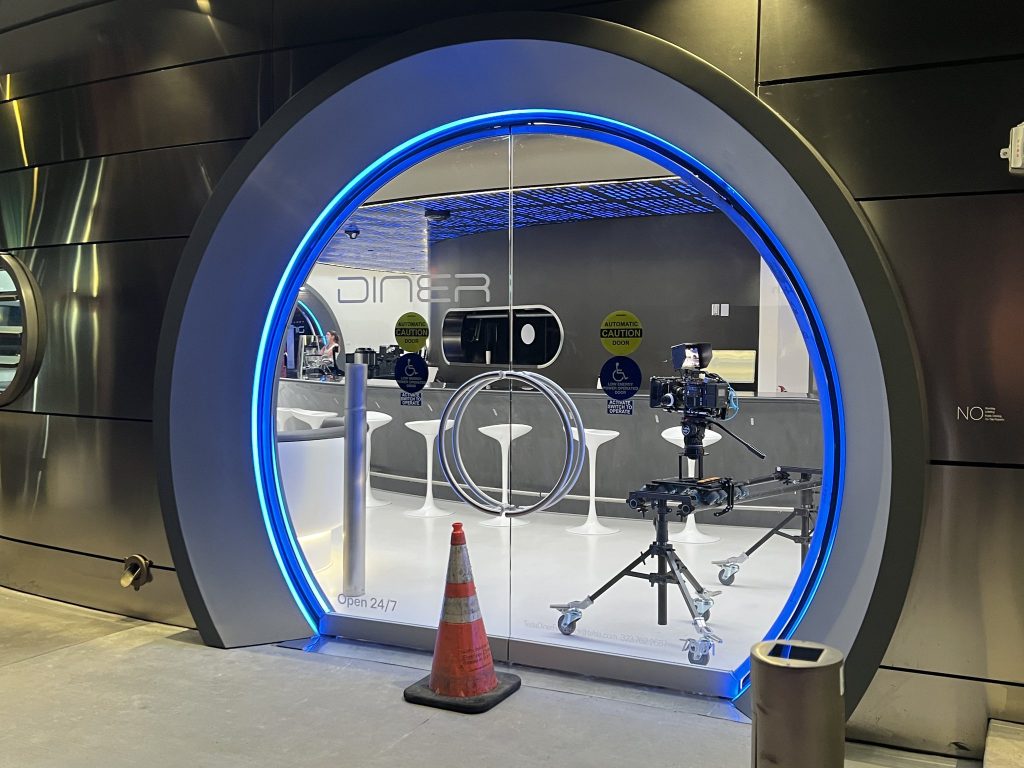
Credit: BradGoldbergMD | X
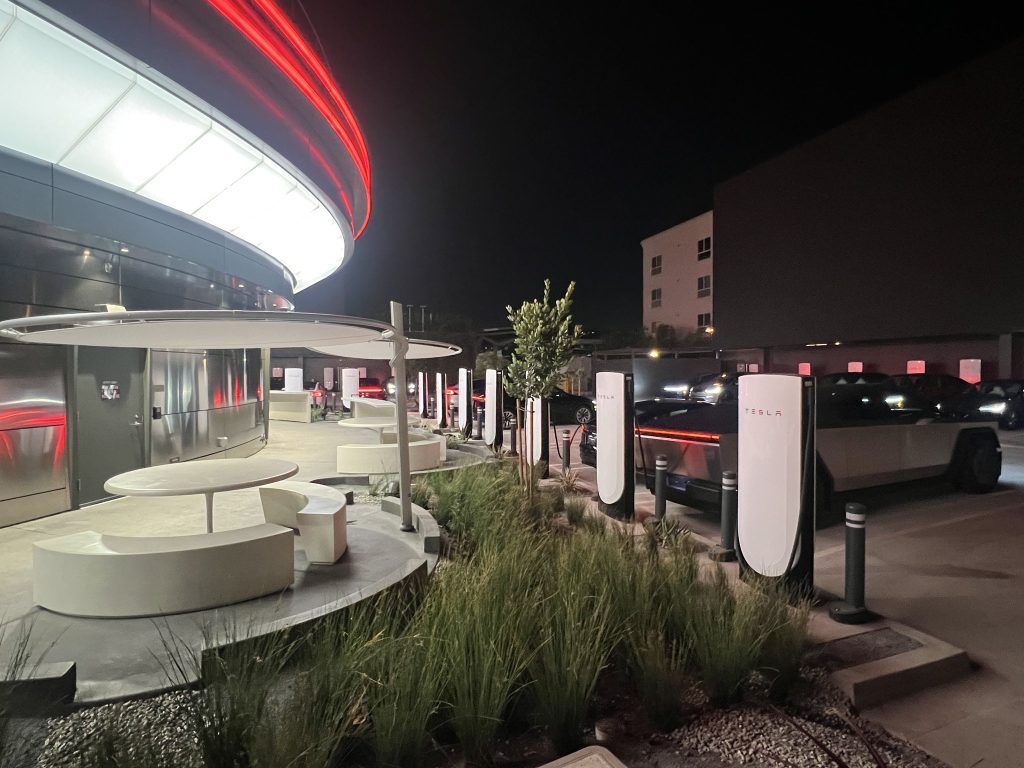
Credit: BradGoldbergMD | X
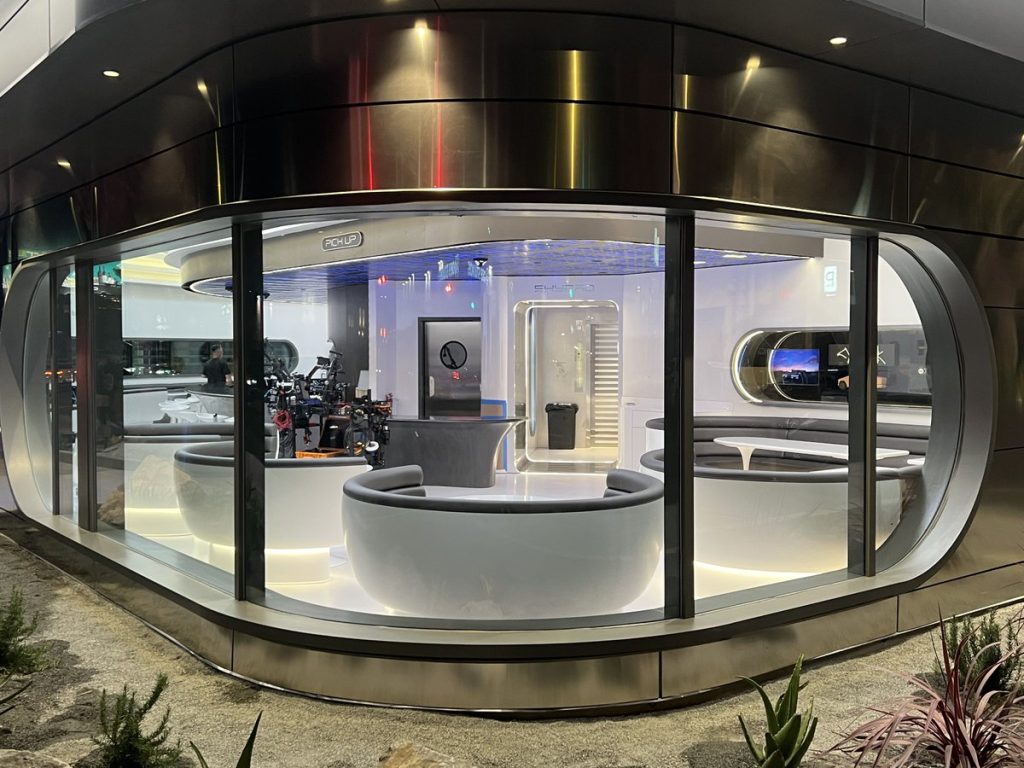
Credit: BradGoldbergMD | X
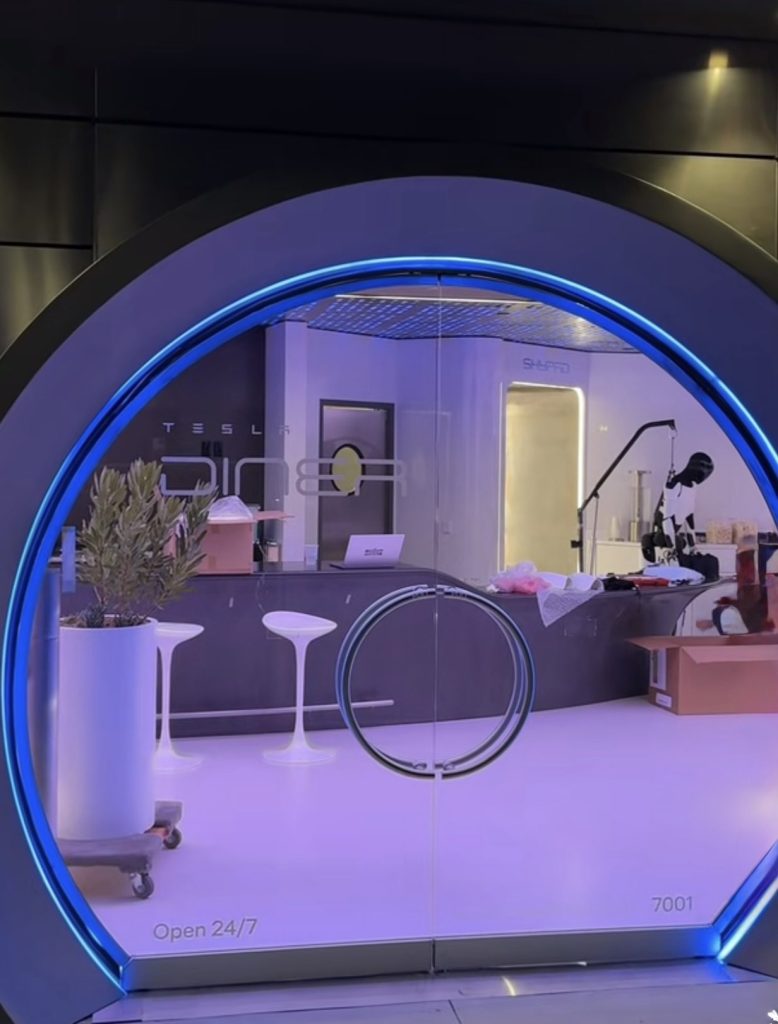
Credit: TeslaKing420 | X

Credit: TeslaKing420 | X
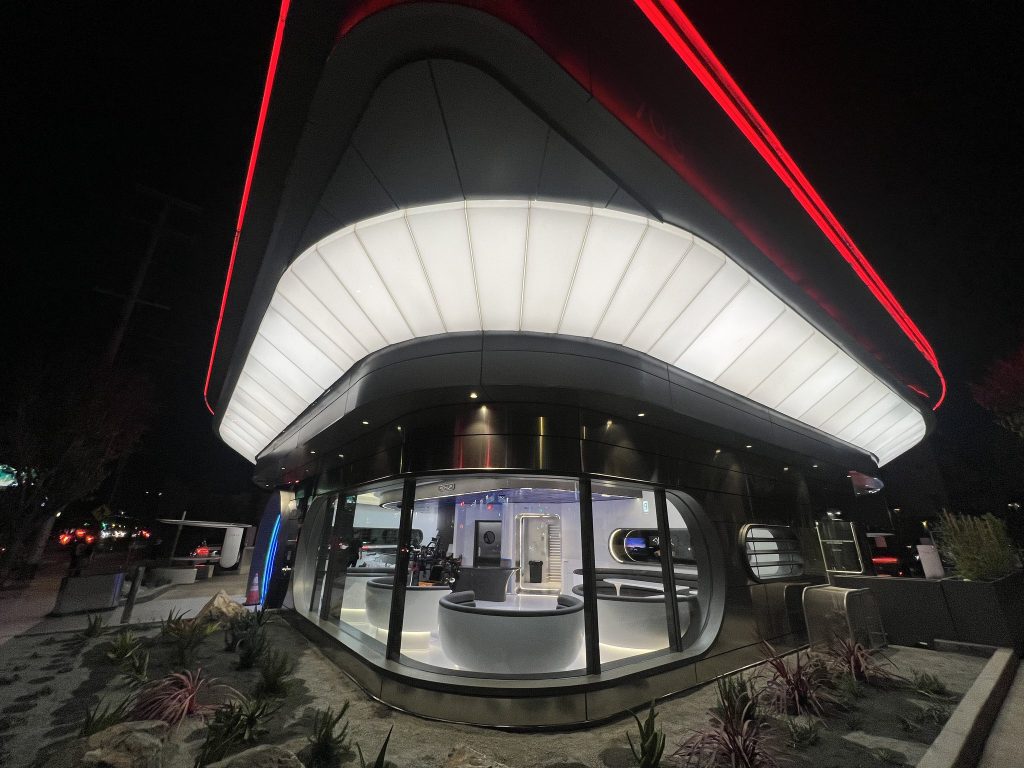
Credit: Brad Goldberg (via Sawyer Merritt on X)
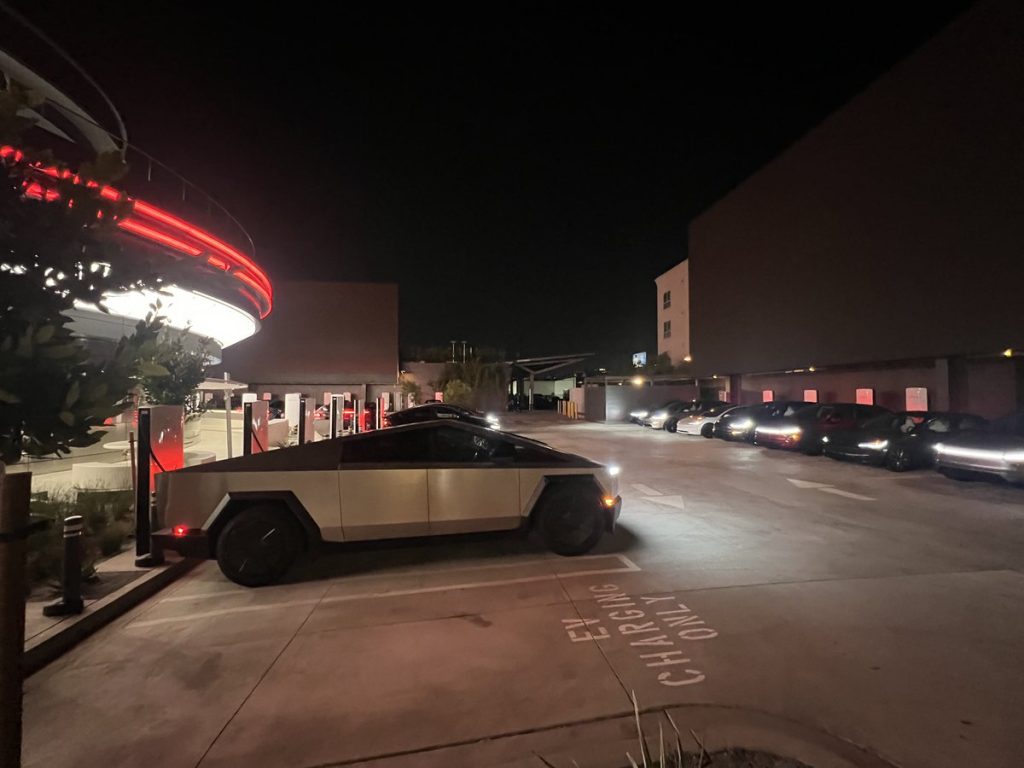
Credit: Brad Goldberg (via Sawyer Merritt on X)
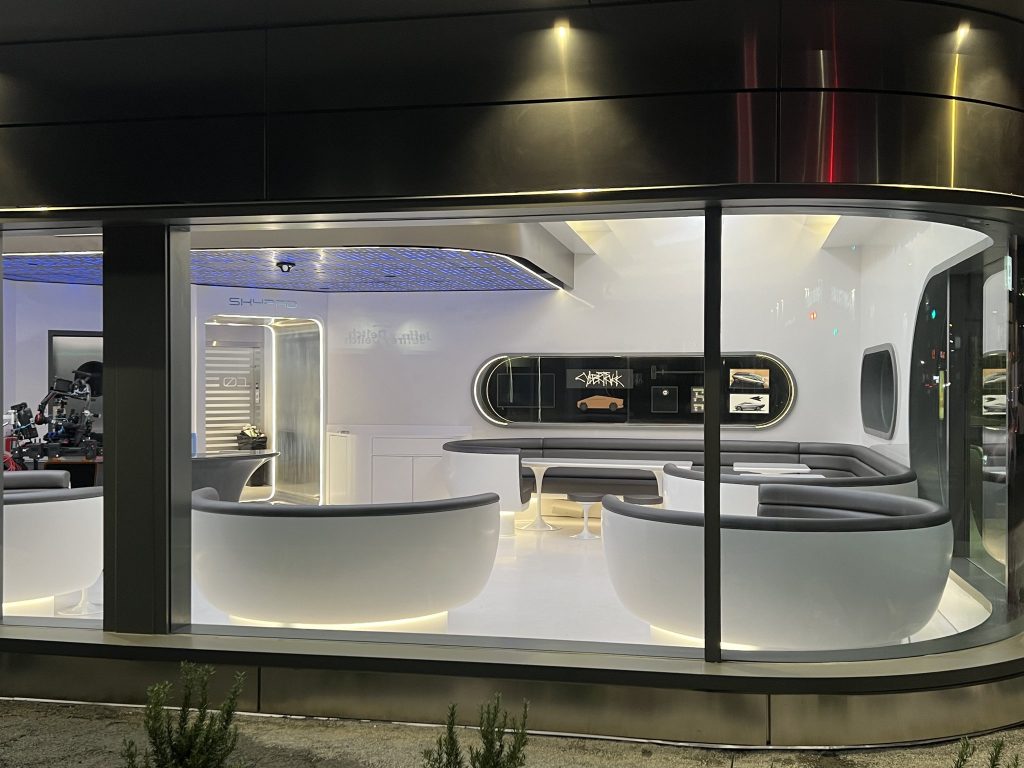
Credit: Brad Goldberg (via Sawyer Merritt on X)
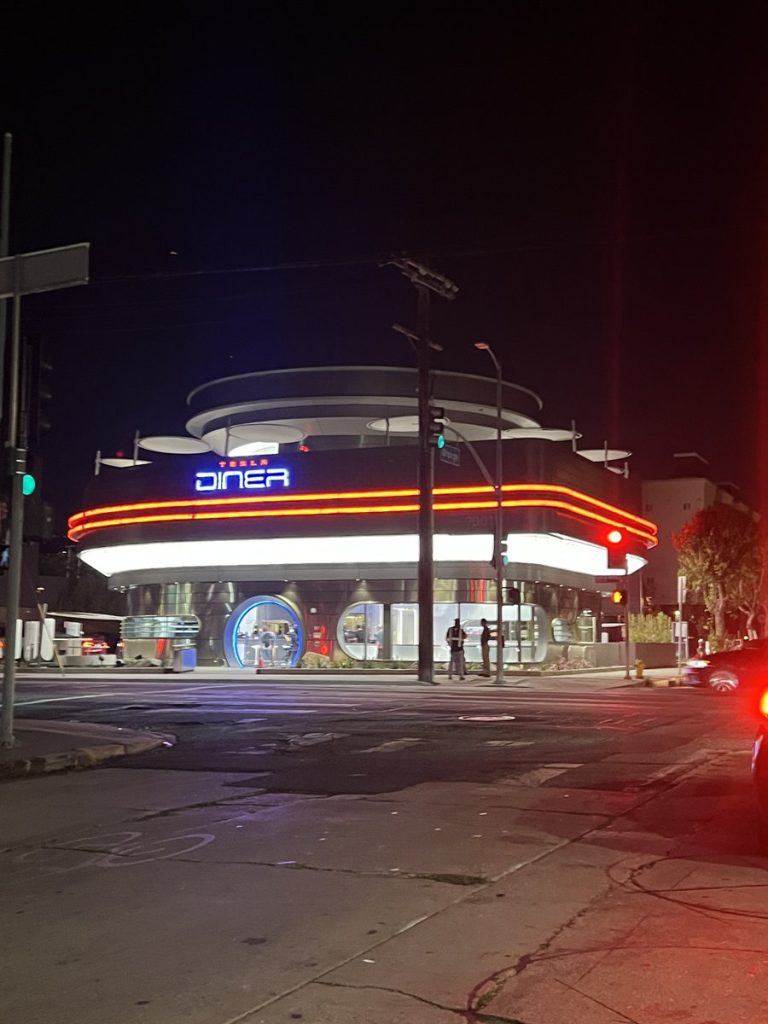
Credit: Brad Goldberg (via Sawyer Merritt on X)
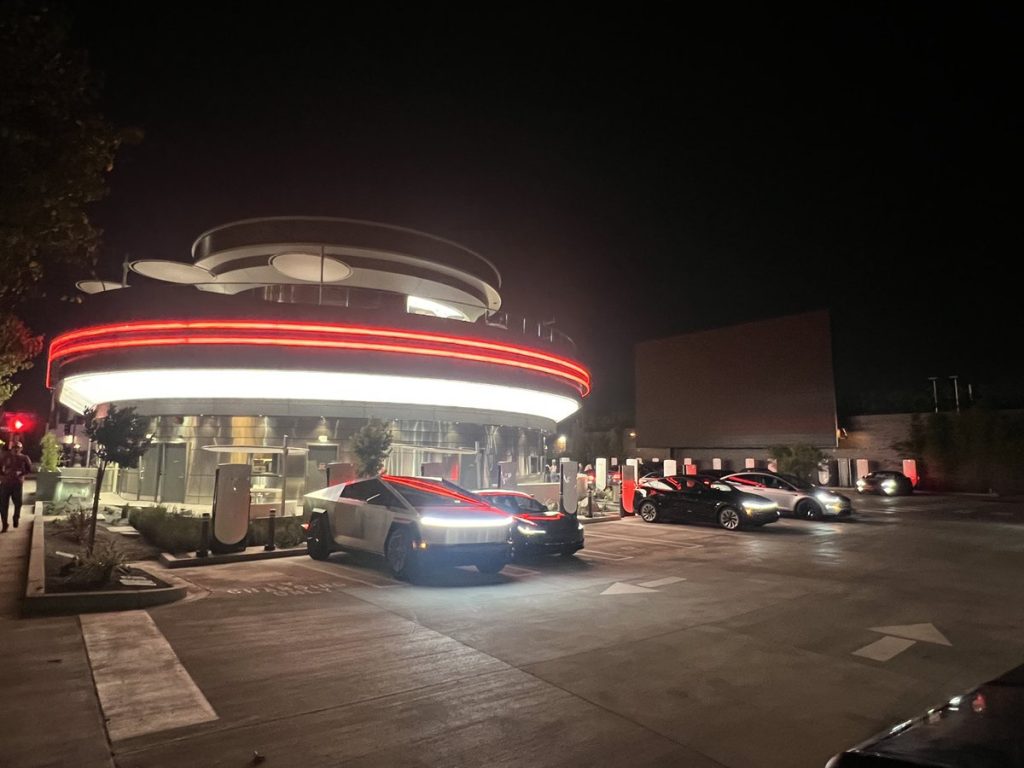
Credit: Brad Goldberg (via Sawyer Merritt on X)
READ MORE ON TESLA’S LA DINER: Tesla readies Drive-In Diner Supercharger for launch with app inclusion
When will the Tesla Diner open to external customers?
While it’s still not open to external customers yet, the news again suggests that the company could be close to an official opening date. Tesla first broke ground on the Diner in September 2023, after receiving a wave of building permit approvals throughout that year. Teslarati also covered much of the construction progress throughout last year, including when crews installed the first and second drive-in screens.
Located at 7001 West Santa Monica Boulevard, the idea was first discussed in 2018 by Musk and a few others on Twitter, featuring 1950s rock and roll, waiters on roller skates, and drive-in movie theater screens playing clips from some of history’s best movies. Notably, the photos of the front doors also show that the site will be open 24 hours a day, 7 days a week, whenever it does end up opening.
Tesla’s progress on Supercharger with diner, drive-in seen in aerial footage
-

 Elon Musk2 weeks ago
Elon Musk2 weeks agoTesla investors will be shocked by Jim Cramer’s latest assessment
-

 News2 days ago
News2 days agoTesla debuts hands-free Grok AI with update 2025.26: What you need to know
-

 Elon Musk4 days ago
Elon Musk4 days agoxAI launches Grok 4 with new $300/month SuperGrok Heavy subscription
-

 Elon Musk6 days ago
Elon Musk6 days agoElon Musk confirms Grok 4 launch on July 9 with livestream event
-

 News1 week ago
News1 week agoTesla Model 3 ranks as the safest new car in Europe for 2025, per Euro NCAP tests
-

 Elon Musk2 weeks ago
Elon Musk2 weeks agoxAI’s Memphis data center receives air permit despite community criticism
-

 News4 days ago
News4 days agoTesla begins Robotaxi certification push in Arizona: report
-

 Elon Musk2 weeks ago
Elon Musk2 weeks agoTesla scrambles after Musk sidekick exit, CEO takes over sales


